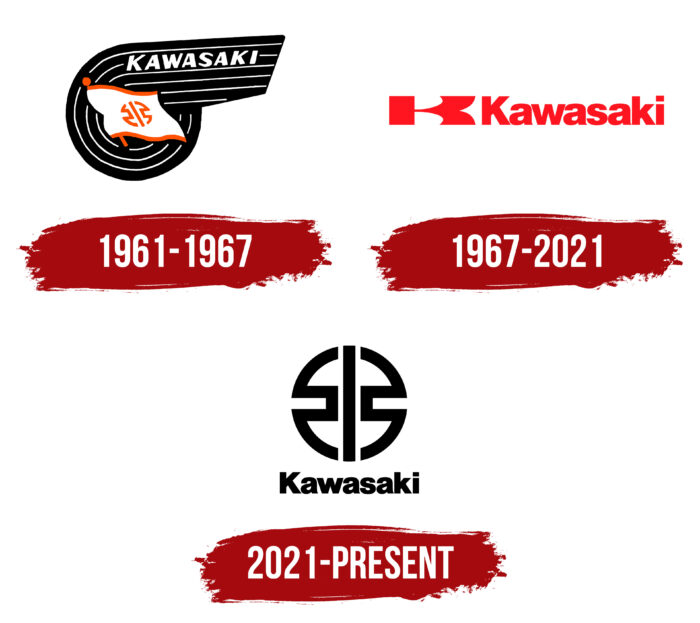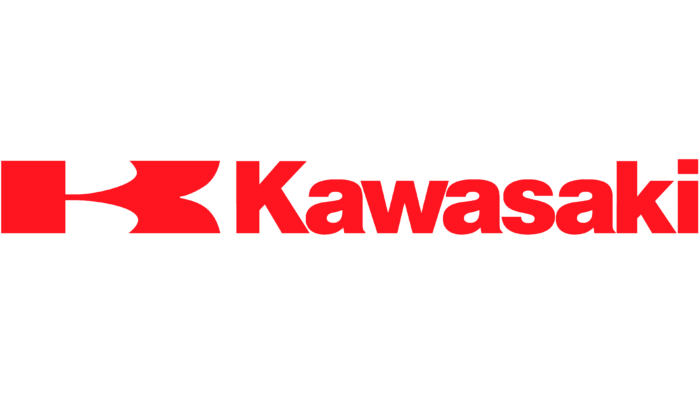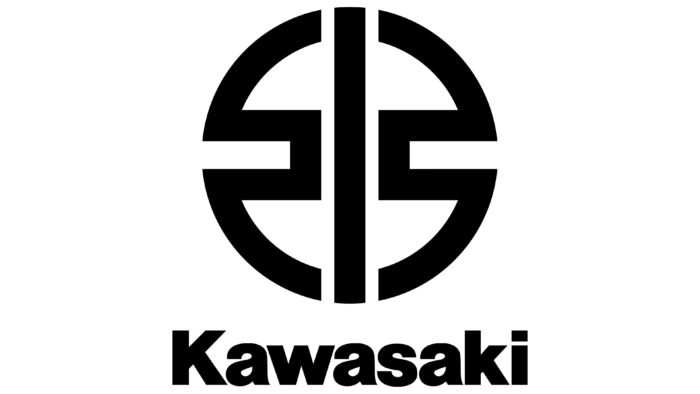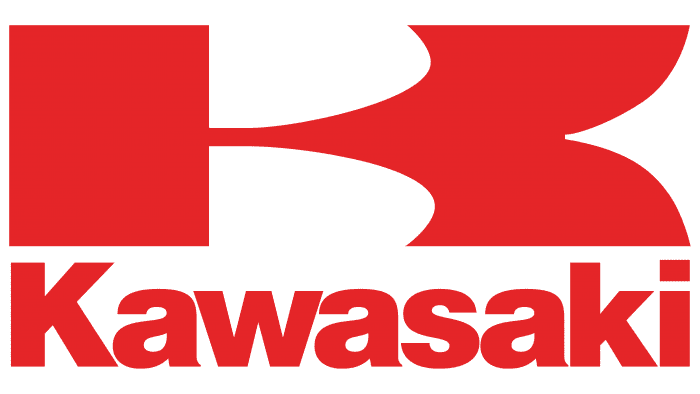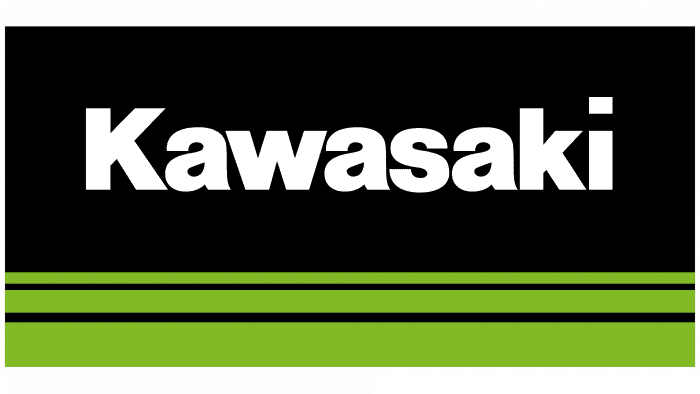The Kawasaki emblem reflects national identity, respect for the founder’s memory, continuous expansion, and product focus. The emblem reflects trust in the brand, indicating the quality of the products.
Kawasaki: Brand overview
Kawasaki is a famous Japanese brand founded in 1896. It is one of the world’s largest industrial enterprises, producing motorcycles, jet skis, tractors, trains, ATVs, robots and other equipment. It is now such a massive transportation and manufacturing company that it has two headquarters. One is located in Tokyo, and the other is in Kobe. The founder of the industrial concern is Kawasaki Shojo, who gave the company his surname, which was later taken as the basis of corporate symbols.
Meaning and History
The company’s career began with aircraft and shipbuilding, as well as repairing railroad transportation. But in the postwar years, Japan, as the losing side, was obliged not to produce airplanes, imposing a moratorium on this direction. All equipment was dismantled and taken out of the country, and thousands of people lost their jobs.
To save the situation, Kawasaki decided to retrain itself. In the late 1950s, it bought the bankrupt Meguro Manufacturing, a motorcycle manufacturer, and switched to a different technical direction. Thus began the formation of a motorcycle brand with an individual mark that quickly became recognizable around the world. Over the years, it has only changed once.
What is Kawasaki?
Kawasaki is a motorcycle brand based in Tokyo, Japan, and is a division of Kawasaki Heavy Industries. The company was founded in 1896 and originally produced Meguro motorcycles, but later switched to two-wheeled personal transportation after acquiring its own engine technology. In 1974, the company opened an overseas assembly plant in Lincoln, Nebraska.
1961 – 1967
The debut emblem of the transportation company contains a sports track laid out in several wide stripes. This is a direct reference to the sporty direction of the work, as in the early years, the company emphasized motorcycles, making them a benchmark of quality and ergonomics.
In the center of the race tracks, unfolded in the form of a turn, there is a signal flag, with which the competition begins. The main banner is white, while the edges and shaft are yellow. The Kawasaki name is printed on a black lined box.
1967 – 2021
After a major expansion of the technical base and range, the manufacturer decided to move away from the sporting theme reflected in the logo and make it universal. As a result of a large-scale rebranding, the Japanese brand has a new symbolism. In addition, a full package of services was presented – from corporate style to official label. The version consists of text. It uses the corporate name in a strict style. “K” is not only the initial letter in the word – it is also a kind of graphic sign with a large straight leg and a zigzag element.
The name in the logo is written in upper case. The letters do not have serifs – they look like perfectly even marks, not protruding beyond the specified boundary by an inch. The exception is the letters “k” and “i,” the height of which coincides with the first letter of the word. The color palette of the logo includes black, white, scarlet (previously), and bright red (now).
2021 – today
Kawasaki’s new logo isn’t exactly new. The brand name, consisting of a vertical bar and two wavy lines, was already seen on the old logo, which was introduced in 1961. It appeared much earlier – even before the Japanese company began to produce motorcycles and tractors. It is believed that this symbol, known as the “River Sign,” was first used in 1870. It adorned the flags of ships built at the Kawasaki Tsukiji shipyard, the same shipyard that later became the founder of Kawasaki Heavy Industries.
The River Mark was remembered in 2014 when its image appeared on the top hood of production motorcycles. And now it’s back for good, helped by the spin-off of the motorcycle business into a separate company, Kawasaki Motors Limited. This happened in 2021, and at the same time, a logo was created to reflect two aspects at once: preserving historical heritage and looking to the future.
Since the transport manufacturer hails from Japan, its trademark is a stylized character. It means “river,” as the company used to be engaged in shipbuilding. In modern realities, its meaning has changed: now the symmetrical emblem, consisting of a vertical bar and two mirrored figures, symbolizes the rapid development of Kawasaki, the desire to move forward and use environmentally friendly “green” technologies. The black corporate identity symbol is combined with the brand name, which is located at the bottom and colored in the same black color.
Kawasaki: Interesting Facts
Kawasaki Heavy Industries, a company from Japan, is known for making many different things, like planes, trains, ships, and motorcycles.
- Beginnings: Kawasaki started in 1896 with ships and grew into making motorcycles, airplanes, and more.
- Variety: Kawasaki doesn’t just make motorcycles; they also make jet engines, helicopters, spaceships, and ships, showing their wide engineering skills.
- Motorcycles: Kawasaki is famous for its fast and well-designed Ninja and Z series motorcycles.
- Kawasaki Disease: A children’s illness called Kawasaki Disease is named after a doctor, not the company, but the name often confuses people.
- Green Efforts: Kawasaki works on creating cleaner energy, focusing on hydrogen as a clean fuel.
- Space and Air: They’ve played a big part in Japan’s space and defense efforts, making everything from satellites to space station parts.
- Fast Trains: Kawasaki makes Japan’s bullet trains, which are known for being fast, reliable, and safe.
- Robots: Kawasaki Robotics is a leader in manufacturing robots for various jobs, including manufacturing and surgery.
- Global Presence: Kawasaki isn’t just in Japan; they have facilities and offices worldwide.
- Helping Out: They’re involved in helping communities, education, and environment projects, showing their commitment to making a difference.
- Marine Tech: Kawasaki also shines in making advanced ships and submarines and exploring underwater technology.
- Lime Green: Kawasaki’s motorcycles are often lime green, a color that’s become a trademark for them in racing.
Kawasaki has come a long way from building ships to becoming a global name in many industries, all thanks to its commitment to innovation, quality, and versatility.
Font and Colors
When the motorcycle company Kawasaki Motors Limited appeared as part of the corporation, it was decided to celebrate its birthday with a new logo. Despite this, the font has not changed at all. The wordmark looks exactly the same as in the 1961 version. The bold letters are very close together, but the lettering is clearly legible thanks to their streamlined, slightly rounded shape.
The font used has several analogs that differ only in minor details: Foundation Sans Black by FontSite Inc., Pragmatica Black by ParaType, Sequel Sans Head Black by OGJ Type Design, and Crique Grotesk Black by Stawix. In terms of color, the Kawasaki emblem is uniform: both the abstract symbol and the brand name are painted in the same shade of black.
Kawasaki color codes
| Black | Hex color: | #000000 |
|---|---|---|
| RGB: | 0 0 0 | |
| CMYK: | 0 0 0 100 | |
| Pantone: | PMS Process Black C |

